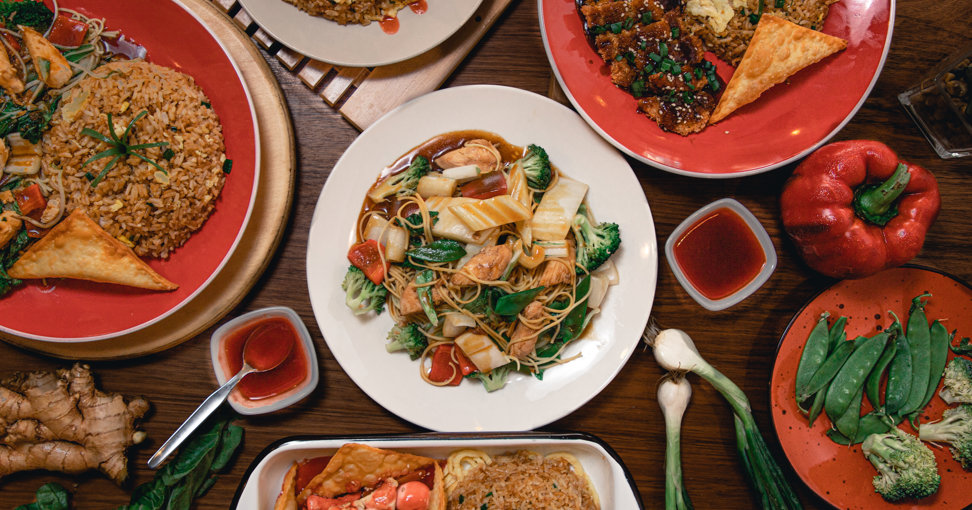The history of Chinese-Peruvian culinary fusion

Migration and cultural fusion
Chinese migration to Peru had a profound impact on the country's culture, economy, and especially its gastronomy. With their arrival, Chinese immigrants introduced ingredients previously unknown to local cooks, such as kion (ginger), sillao (soy sauce), and jolantao (snow peas). Combined with native Peruvian products, these elements gave rise to one of the country’s most iconic cuisines: chifa.
Historical context
On December 5, 1854, President Ramón Castilla abolished slavery in Peru. To replace the labor force, approximately 90,000 Chinese workers arrived between 1840 and 1874. Many settled in downtown Lima, forming what is now known as the Barrio Chino (Chinatown), located on Capón Street. Initially working on sugar and cotton plantations or as domestic servants, over time they began opening small businesses, shops, and eateries—laying the foundations for chifa.
The birth of chifa
The fusion of Eastern ingredients with criollo (Creole) flavors gave birth to chifa, now a staple of the weekly menu in many Peruvian households. While its base is primarily Cantonese, influences from Shanghai, Sichuan, Hong Kong, Beijing, and Taipei are also present. This hybrid cuisine is not only delicious but a living testament to cultural integration and the blending that defines Peruvian cooking.
Typical ingredients and products
As a result of this integration, new ingredients entered the Peruvian market and are now locally cultivated. These include:
Vegetables: si jua (Chinese squash), pac choi (Chinese onion), siu choy (Chinese cabbage), sacco (Chinese potato), Wong cua (cucumber), gaa choy (Chinese bean).
Condiments: cua choy (Chinese garlic), wa yeum (Chinese pepper), giom fam (Chinese cinnamon).
Processed products: rice noodles, wantán (wonton), taufú (tofu), pickled radish, tamarind sauce, and sesame oil.
The origin of the word "Chifa"
The term chifa comes from the Cantonese dialect, specifically from the phrase chi fan, meaning “to eat rice.” In Peru, this expression was adopted to refer to Chinese-Peruvian restaurants. Thus, a distinct culinary identity was born—one that has become part of everyday vocabulary.
Early chifas in Lima
Some of the earliest and most iconic chifa establishments in Lima include:
1921: Kuong Tong
1931: San Joy Lau
1936: Ka Pan (later known as Kam Hong)
1945: Won Jau Aristocrático, in Miraflores
1955: Kan Lung, or Golden Dragon
Kan Wa, one of the first chifas outside Chinatown, near the Plaza Mayor
These pioneering restaurants marked the beginning of a phenomenon that quickly spread across the country.
Lima’s chinatown: A symbol of cultural integration
Located in the Barrios Altos area of Lima’s Historic Center, Lima’s Chinatown is one of the oldest in Latin America. Founded by immigrants, it became a commercial and cultural hub. Since 1971, the Chinese Arch has marked its entrance, honoring the shared history between Peru and China. Today, Chinatown is famous for its restaurants, shops, temples, and Chinese New Year celebrations, attracting thousands of visitors annually.
Gastronomic legacy
Among the most emblematic chifa dishes are:
Lomo saltado (a symbol of Creole-Asian fusion)
Arroz chaufa (fried rice)
Sopa wantán (wonton soup)
Tallarín saltado (stir-fried noodles)
Chi jau kay (fried chicken in soy sauce)
Chancho con tamarindo (pork in tamarind sauce)
Aeropuerto (a mix of fried rice and noodles)
Popular sweet and savory steamed snacks include:
Chinese tamales
Stuffed min pao (steamed buns)
“Seven flavor” pastries with honey and sesame
Baked shredded coconut sweets
Modern chifas and their impact
Today, modern chifas have revolutionized Chinese-Peruvian cuisine, blending tradition with innovation. Restaurants like Titi—recognized as the best chifa in Peru by the Summum Awards in 2023 and 2024—along with others like Shi Nua, Hou Wha, and Madam Tusan, have gained notoriety for reinterpreting classic dishes using haute cuisine techniques. Many also incorporate elements from Nikkei, Amazonian, or contemporary cuisine, creating unique dining experiences.
These venues not only elevate the culinary scene but also contribute to economic and social development by generating jobs and supporting small family-run businesses across the country. It is estimated that there are over 6,000 chifas in Lima and the provinces, each with its own style and loyal clientele.
A symbol of national identity
Beyond its flavors, chifa represents a story of resilience, integration, and creativity. It is one of Peru’s most beloved cuisines, and its continuous evolution shows how cultural fusion can give rise to gastronomic expressions that transcend borders and generations. Far from being a passing trend, chifa is now a cornerstone of Peruvian culinary identity, recognized both nationally and internationally.
SOURCES:
Book: Cocina Peruana: Historia, Cultura y Sabores, Autor: Sara Beatriz Guardia (USMP)
Photo: Seafood Chaufa – Restaurante Artesana (Alicante, Spain)